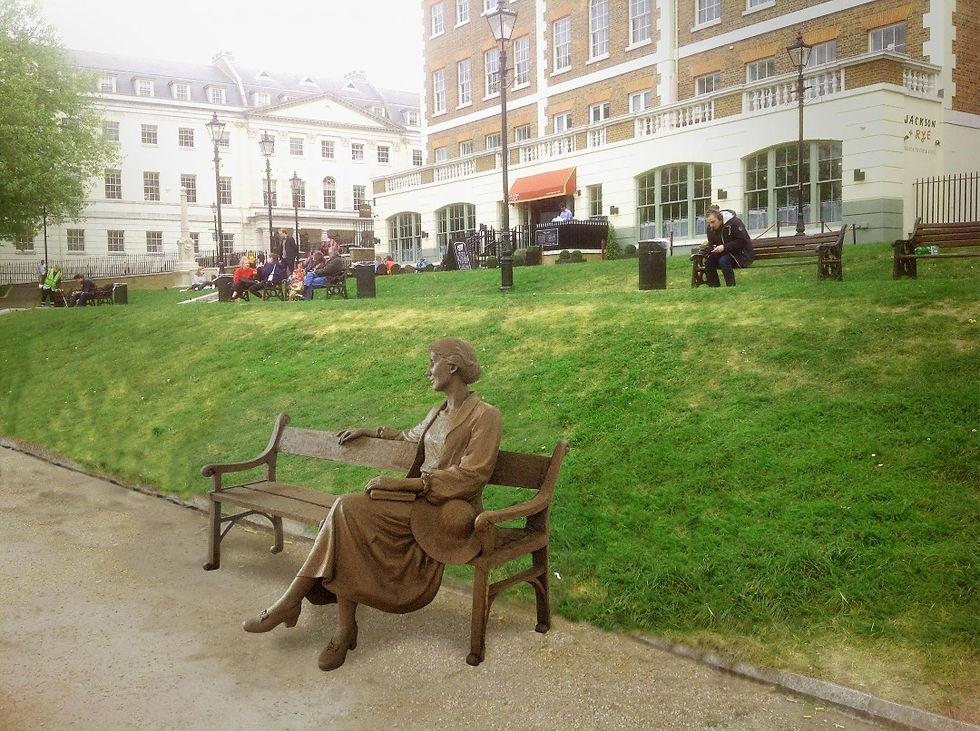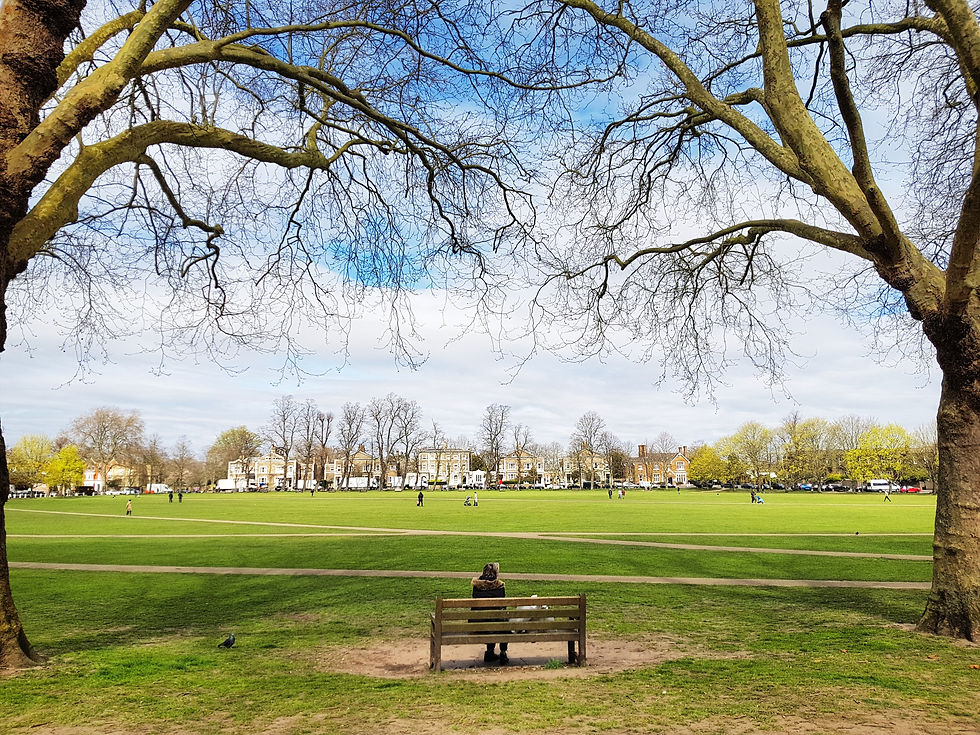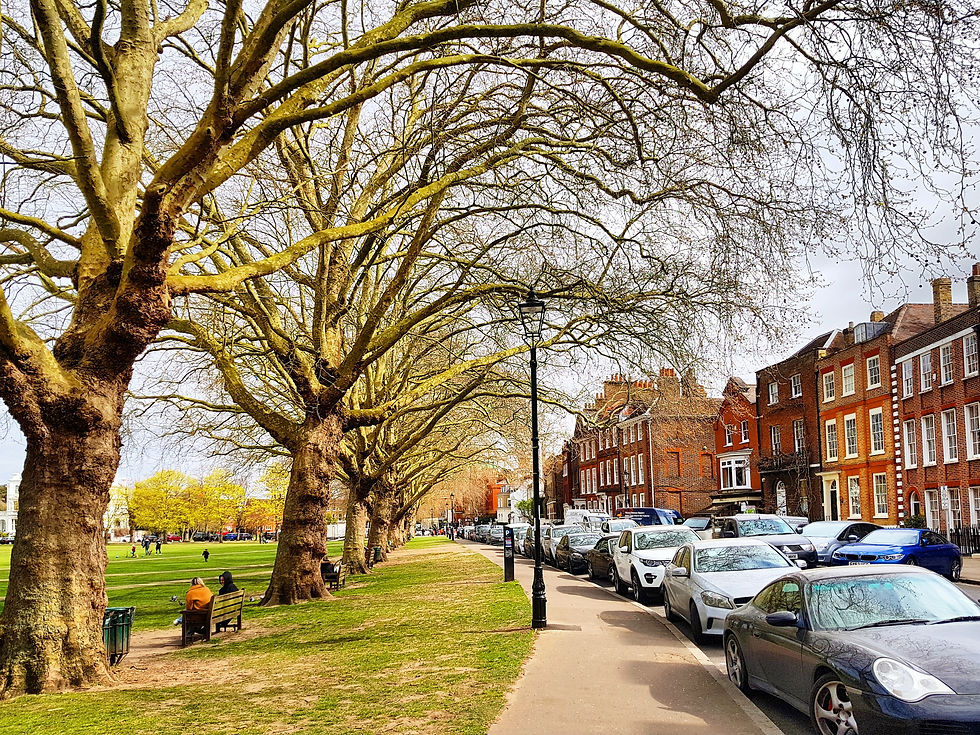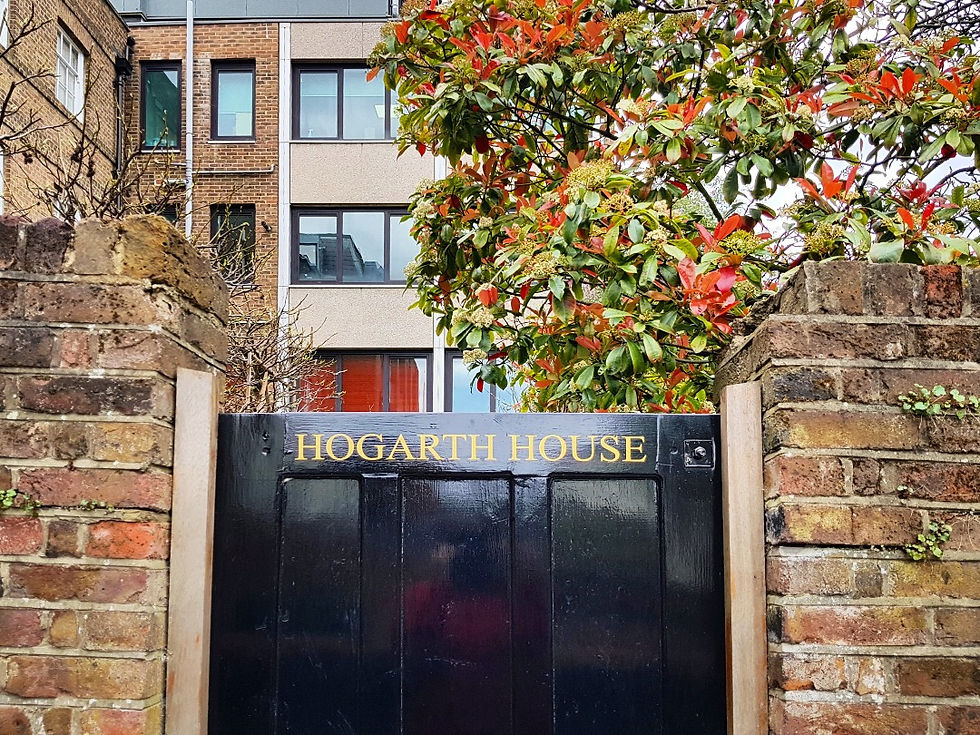Fundraiser for a Virginia Woolf Statue in Richmond
- Ina

- Mar 16, 2021
- 5 min read
Updated: Dec 29, 2023
Richmond celebrates the life and works of Virginia Woolf with a long-overdue life-size bronze statue of the innovative writer. As the fundraising campaign has only reached the 68% milestone of the $50,000.00 target, any help is much appreciated.
This article delves into the decade she spent in the picturesque Richmond, to then detail the promising portrayal of a "happy Virginia" admiring the River Thames for centuries to come envisioned by the award-winning sculptor Laury Dizengremel.

Where did Virginia Woolf live in Richmond?
Writer Virginia Woolf (1882-1941) and her husband, Leonard (1880-1969), lived in Richmond-Upon-Thames between 1914 and 1924. They first moved on the east side of No. 17, The Green, in October 1914, a year marked by First World War, and six months later, to Hogarth House on Paradise Road.
Their relocation to the southwest outskirts of London, in Richmond, was prompted by Virginia's need to ease the stress and recover from the anxiety of writing her first novel, "The Voyage Out," completed in 1913 and published in 1915.

The decade spent in Richmond was a quiet, creative one, and inspired her to experiment with various ideas and formats of novels, reviews, short stories, and essays. The couple even purchased their own hand-printing equipment which marked the start of their self-publishing endeavour – the iconic Hogarth Press settled in the drawing room of their home on Paradise Road.

1st Richmond Residence: 17 The Green, TW9 0QB
17 The Green is one of London’s oldest and largest garden squares laid out by Henry Vll. For five decades during the 18th century, it used to be a coffee-house, described as “a desirable copyhold estate, known by the name of the Richmond Coffee; on the ground floor there's a large coffee room pleasantly situated facing the Green; a bar parlour and other necessary offices, with a billiard room and kitchen, detached from the house.”
Horace Walpole might have referred to it in the following note dated 14th June 1749: “As I passed over the Green I saw Lord Bath, Lord Lonsdale, and half a dozen more of White’s Club sauntering at the door of a house they had taken there, and come to every Saturday and Sunday to play at Whist.”

Afterward, the house was used by solicitors’ firms, the Richmond School of Cookery (from 1900 to 1911), and even served as a boarding house between 1911 and 1919. Leonard and Virginia Woolf made it their home in October 1914.

2nd Richmond Residence: 34 Paradise Road & Hogarth Press
In March 1915, the Woolfs moved again, this time into a four-bedroom Georgian house on 34 Paradise Road. Here, in 1917, they turned their passion for printing into a full commercial printing business after spontaneously buying printing equipment found on sale on the Farringdon Road.
Hogarth Press promoted avant-garde ideas about European artists like Matisse and Picasso, and supported emerging writers such as Katherine Mansfield, T.S Eliot, and E. M. Forster. In charge of the book covers was the artist Vanessa Bell, Virginia's sister.

Besides imprinting their own works, they pioneered translating Russian authors such as Dostoevsky, published Sigmund Freud's work and the first UK edition of The Waste Land by TS Eliot (in September 1923). Their small press is now seen as a precursor of indie publishing. The imprint The Hogarth Press exists to this very day.
“I ought to be grateful to Hogarth and Richmond, and indeed, whether it’s my invincible optimism or not, I am grateful.” (Virginia Woolf)

Richmond Lifestyle
The move to Richmond didn’t start off very well for Virginia, who was a born-and-bred Londoner, as she is quoted saying: “I choose not the suffocating anaesthetic of the suburbs, but the violent jolt of the Capital, that is my choice. The meanest patient, yes, even the very lowest is allowed some say in the matter of her own prescription. Thereby she defines her humanity. I wish, for your sake, Leonard, I could be happy in this quietness …But if it is a choice between Richmond and death, I choose death…”

Virginia eventually adapted to the more provincial surroundings and became active within the local community. She ran the Women’s Cooperative branch in Richmond, set up to promote recreational and instructional classes for mothers and girls.
Richmond’s relaxing lifestyle influenced the writer in every aspect of her existence, from her writing to social connections and relationships with famous visitors and servants.
“The time she spent in Richmond – and the events that took place in her own life and the wider world during that time – influenced Woolf’s development as a writer and her personality in a more general sense. Woolf’s life and work would have been very different if she had not lived there.” (Joseph Ludlow for NB Magazine)
At last, she was in a place where she could work and focus on what made her one of the greatest British writers: addressing the anxieties of the post-First World War society and continuing the timeless investigation of the human condition.
To quote a Goodreads review of the book "Virginia Woolf in Richmond" by Peter Fullagar, “Richmond allowed a social interaction without the bustle and rush of a fast-paced London. It was a tranquil life. Although Woolf is permanently linked with Bloomsbury, she does have deep roots in Richmond.”
In March 1924, the Woolfs moved from Hogarth House to 52, Tavistock Square, London, an event commented by a curator of a National Portrait Gallery exhibition on Woolf, Frances Spalding, as it follows: “Her pleasure in being back in town fed into Mrs. Dalloway, not least in her description of Mrs. Dalloway's walk through London."

The Virginia Woolf Statue in Richmond
Aurora Metro Arts & Media Ltd. is fundraising for the first-ever life-size bronze statue of Virginia Woolf in the UK to be installed at Richmond Riverside. The purpose of the statue is to celebrate her prolific life in Richmond and recognise her role as a:
One of the co-founders of Modernist Literature.
A significant figure in London literary society.
A key figure in the Bloomsbury Group of influential intellectuals.
Source of inspiration for many films, stage plays, and books.
Precursor in turning the stream of consciousness into a narrative device.
BBC ICON of the 20th century.
Feminist who championed the importance of appreciating women writers and artists.
LGBTQ icon (she talked openly about her same-sex relationship with Vita Sackville-West and her mental health issues).
The statue has been commissioned to award-winning sculptor Laury Dizengremel and will feature the author in her 20s, happily sitting on a bench and enjoying the views of the Riverside. Passers-by can sit next to her and spark a lively conversation.
The artwork has been designed as an interactive artwork for the general public to enjoy for centuries to come. Dizengremel added for swlondoner.co.uk: “It’s nice that it’s not just something you can look at, but something that you can sit next to and be with.”

The statue portrays Woolf in a relaxed, joyful mood, as she often depicted in her diaries during the decade spent in Richmond. “In her diary, you see over and over again her love of Richmond, you see her love of the Thames, you see her enjoyment of walking the dog along there,” said Dizengremel.
The artist chose an upbeat portrayal of Virginia, considering “the bust in Tavistock Square incredibly sad and Woolf didn’t like it. So my portrayal of Virginia is in a happy moment. I imagined her sitting in Richmond on a bench writing into her diary.”
According to Laury Dizengremel, “this Virginia is happy, she sits on a bench and hopefully, she will inspire generations of women.”
Read "Virginia Woolf in Richmond" by Peter Fullagar.
_______________________
Did you enjoy this article? Great! If you'd like to contribute to the running costs of WithinLondon, click the button below:


Comments